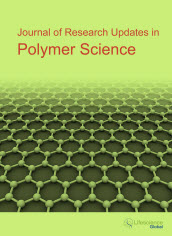jrups
Abstract : Delamination and Separation of Aluminum-Polyethylene-Paper Packing Material
|
|
Abstract: Delamination and separation of laminated aluminum- polyethylene-paper packaging material were conducted for recycling packaging materials. Delamination was carried out using glacial acetic acid (GAA) solution. L9 (34) orthogonal experiments demonstrate that the most significant factor is GAA concentration followed by temperature and liquid/solid ratio. The delamination time decreased sharply with increasing temperature and the GAA concentration. The packaging material was delaminated under conditions of 60 ˚C, 70 v% GAA solution, liquid/solid ratio 20:1 and delamination time 60 min, and separation of polyethylene, paper and aluminum foil was conducted through sink-float method and air separation. Polyethylene, paper and aluminum foil were separated efficiently. The recovery and purity of aluminum foil was 90.81% and 100%, respectively; the purity of polyethylene was 100%; the recovery and purity of paper was 100% and 96.03%, respectively. This study offers some technical insights for recycling of aluminum-plastic packaging. Keywords: Delamination, separation, aluminum, polyethylene, packaging material.Download Full Article |
Abstract : Mechanism of Micro-Crack Propagation in Semicrystalline Polymers
|
|
Abstract: The development and propagation of cracks is the principle reason for premature mechanical failure of polymeric materials. The well known and widely accepted fracture theories, namely the Griffith fracture theory and the Irwin model, both assume that fracture takes place through the presence of preexisting cracks in the polymer. These minor preexisting cracks, or micro-cracks, are practically present in most polymeric samples. The Griffith approach assumes that for any particular material, the fracture stress is controlled by the size of the flaws present in the structure. The control and minimization of micro-crack size during polymer processing requires an understanding of the inherent micro-crack propagation mechanism. The present research reveals a mechanism of internal stress-induced micro-crack propagation in semicrystalline polymers and describes the effect of the intricate crystalline morphological interactions on the extent and direction of intra-spherulite and inter-spherulite micro-crack propagation. In conclusion, a method for minimizing inter-spherulite micro-crack propagation is presented in this article. Keywords: Crystalline morphology, fracture, micro-cracks, internal stress, high -density polyethylene (HDPE). Download Full Article |
Abstract : Nanoencapsulation of Antitumor and Antituberculosis Drug Preparations with Biocompatible Polymers
|
|
Abstract: Controlled release of drugs at the locus of the targeted disease is one of the most challenging research areas in the pharmaceutical field. Nowadays novel drug delivery systems on the basis of polymers are attracting great attention since they can improve therapeutic efficiency of potent drug preparations decreasing the risk of side effects. By developing colloidal drug delivery systems such as liposomes/vesicles and polymeric nanoparticles and nanocapsules the pharmacokinetics of the drug can be changed and thus the therapeutic efficiency of the drug can be increased. Nanoparticles with their special characteristics such as small particle size, large surface area and high capacity of carrying biologically active substances offer a number of advantages compared to other colloidal drug delivery systems [1, 2]. Controlled drug release systems are constructed on the basis of natural and biocompatible synthetic polymers. Among the most promising biocompatible polymers human serum albumin (HSA), polyalkyl cyanoacrylates (PACA) and poly-D,L-lactic acid (PLA) are of great importance. Nanoparticles on their basis have been proven to be efficient in treatment of serious and long-termed diseases such as tumors, tuberculosis and bacterial infections [3-126]. Therefore this article is aimed to give a brief review on the research works devoted to the synthesis and investigation of polymeric nanoparticles and nanocapsules based on PACA, HSA and PLA for the past three decades. Keywords: Drug delivery systems,nanoparticles, nanocapsules, polyalkyl cyanoacrylates, human serum albumin, poly-D,L-lactic acid. Download Full Article |
Abstract : Fabrication and Thermo-Mechanical Characterization of HEMA Treated UV Photo-Cured Biodegradable Chitosan Film
|
|
Abstract: Chitosan was extracted from dried prawn shell via chitin and was characterized by Fourier Transformed Infrared (FTIR) Spectroscopy. Thin film of chitosan was prepared by solution casting using a 2% chitosan solution. Chitosan was dissolved in 2% acetic acid. Mechanical properties like tensile strength (TS) and elongation at break (Eb%) of chitosan film were studied. Eight formulations (M1: 5% HEMA to M8: 40% HEMA) were developed with 2-hydroxyethyl methacrylate (HEMA) monomer in methanol (MeOH) along with photoinitiator Darocur-4043 (2%). The film was soaked in those formulations for 1 min and cured under UV radiation at different radiation intensities for the improvement of physico-mechanical properties of the film. The cured films were then subjected to various characterization tests like TS, Eb%, water absorption, FTIR spectroscopy, polymer loading (PL), differential thermal analysis (DTA), and thermo gravimetric analysis (TGA). The M6 formulation containing 30% HEMA in MeOH solution showed the best performance at 20th UV pass. The highest TS, Eb% and PL were found to be 31 MPa, 71.25% and 26.38%, respectively, for the same formulation at 20th UV pass. The DTA/TGA study showed that the film with M6 formulation at 20th UV pass was thermally more stable than non-radiated chitosan film. The FTIR analysis revealed the crosslinking between HEMA and chitosan. Keywords: Chitosan, monomer, cross-linking, grafting, photo-cured, UV radiation). Download Full Article |























